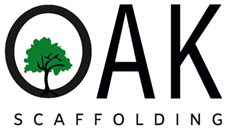Information
-
Site
-
Client
-
Conducted on
-
Prepared by & Position.
-
Personnel on site
Design
-
Is the TG20 compliance sheet available on site?
-
Is the design available on site for non compliant scaffolds?
-
Has the scaffold been erected in accordance with the design provided?
Foundation
-
Are the base boards in good condition?
-
Type of ground?
-
Are the footings provided by the client compliant with design leg load in accordance with the TG20 sheet?
Standards & Legers.
-
Are all the standards and Ledgers correctly plum or level within the allowed tolerance?
-
Are all joints staggered?
-
Are the lift heights and bay sizes compliant with table 1 of TG20 or the design?
Transoms
-
Are the lengths of all transoms sufficient?
-
Is there a transom fitted within 300mm of the node point at ledger braced pairs of standards?
-
Are the spacings of transforms correct on boarded and non boarded lifts?
Bracing
-
Is the facade bracing fixed in accordance with TG20?
-
Is all bracing connected within 300mm of the node point?
-
Is ledger bracing in accordance with TG20 with suitable sized tube?
-
Is all bracing connected via load bearing fittings?
-
Is there any plan bracing?<br>Does it conform to TG20?
Fittings.
-
Are all fittings in a suitable condition?
Ties.
-
Is the tie pattern compliant with TG20?
-
What ties have been used?
-
Have preliminary pull tests been carried out for anchor type ties?
-
Have proof pull tests been carried out?
-
Are tested ties tagged?
Boarded lift.
-
Are the boards in suitable condition?
-
Are there excessive materials left on the boarded lift?
-
Are there any gaps or notches in the boards?
-
Are all boards that are 8ft and under suitably secured?
-
Do all standards project a minimum of 1m through the lift?
-
Are all inside boards suitably secured?
-
Is the internal gap to the building acceptable?
Handrails
-
Are handrails fitted at the correct height?
-
Are the handrails secured using the correct fittings?
Toe Boards
-
Are toe boards fitted to working lifts?
-
Are toe boards fitted correctly?
Access/egress
-
Is the means of access suitable and suitably located to maintain clear doorway access?
-
Are the ladders at correct angle and finish 1m above platform?
-
Are the self closing gates in good order?
Handover/inspection
-
Are scaff tags located at all access points of the scaffold?
-
Is the handover certificate available on site?
-
Have the statutory inspections been carried out in accordance with the WAHR 2005?
Housekeeping.
-
Is all the necessary signage on display?
-
Are all spare materials in a neat and tidy condition?
-
Have all projecting tubes been kept to a minimum and protective caps fitted?
Public protection
-
Have risks to public been addressed?
-
Are brick guards in a good condition and suitably secured?
-
Is there a requirement for debris netting or sheeting and is it fitted correctly?
-
Is there a requirement for a structural lift to secure sheeting above handrail height in accordance with TG20?
-
Are all standards/low level bracing protected with foam?
SG4:15
-
Does the scaffold appear to have been erected in accordance with SG4:15?
-
Is all collective fall prevention in place for non working lifts?
-
Is all personal fall prevention equipment in a good condition?
Lifting/rubbish chutes
-
Are they any lifting accessories fitted to the scaffold?
-
Is there a rubbish chute fitted to the scaffold? under TG20 rubbish chutes may be fitted to a compliant scaffold under advice from an engineer
-
Has advice been sought from an engineer for the additional loading which rubbish chutes put on the scaffold?
Summary.
-
Is the scaffold TG20 compliant?
-
Inspectors comments
-
Please provide a summary and an overall score for this inspection.
-
Inspector. Paul Bray
-
Site representative.












